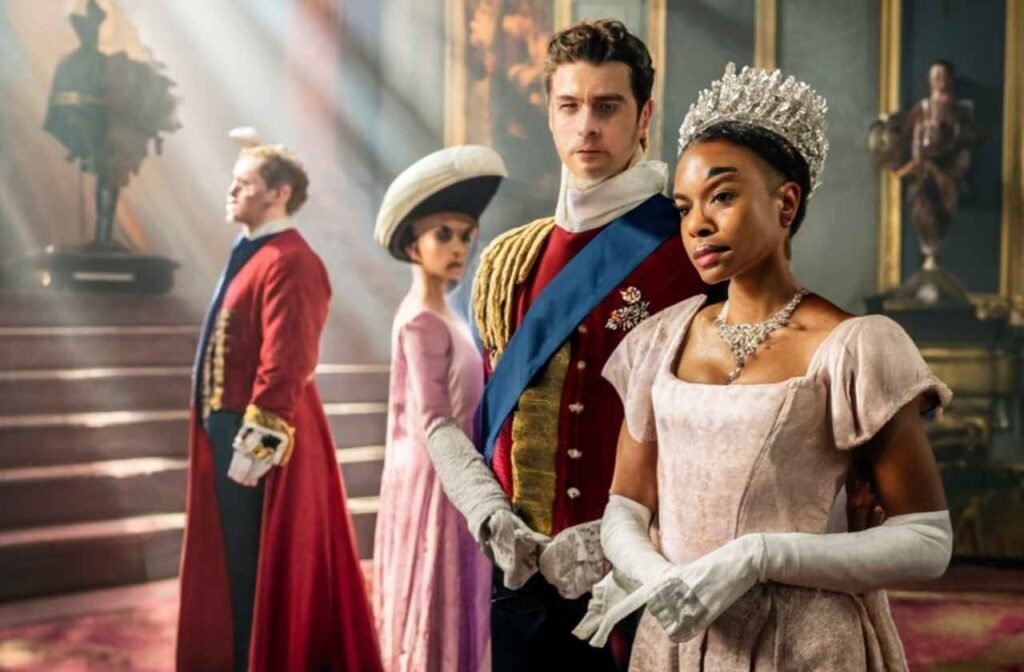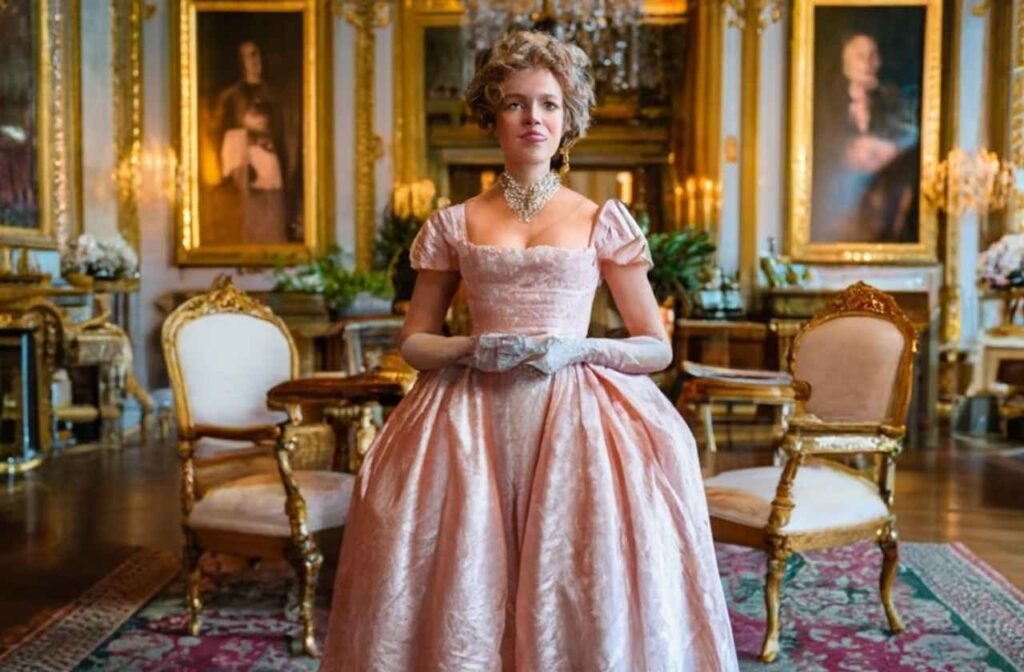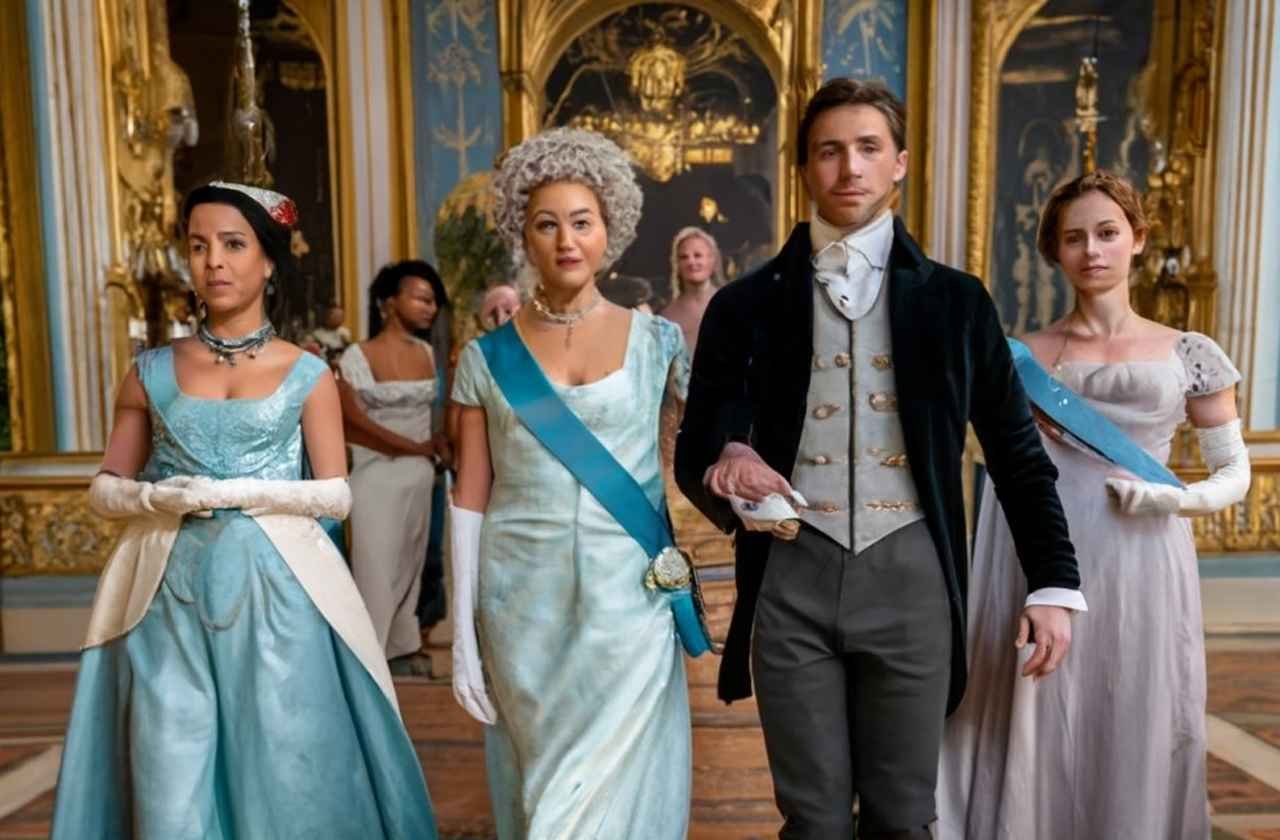Bridgerton, the popular TV show based on the books by Julia Quinn, has taken viewers by storm with its captivating portrayal of the Regency-era British aristocracy and their royal titles. In this guide, we will dive into the fascinating world of Bridgerton’s royal titles, exploring the hierarchical structure of the British aristocracy during that time period and providing a detailed understanding of the characters and their positions within society.
Key Takeaways:
- Bridgerton is a TV show that focuses on the Regency-era British aristocracy and their royal titles.
- The show provides a fascinating glimpse into the hierarchical structure of the British aristocracy during that time period.
- The characters in Bridgerton have unique royal titles that play a significant role in their relationships and personal lives.
- Understanding the historical context of the Regency era is crucial to fully appreciating the significance of the royal titles in Bridgerton.
- Exploring the symbolism behind the royal titles allows us to gain deeper insights into the motivations and desires of the characters.
Understanding the Regency Era Hierarchy
The Regency period, which lasted from 1811 to 1820, was a crucial period in British history that was typified by Prince George IV’s reign. During this time, the British nobility had a significant impact on the social structure. Interestingly, the time was marked by a complex system of titles that determined a person’s place and standing within this powerful elite.
The British aristocracy was divided into different ranks, each with its own set of titles and privileges. At the top of the hierarchy were the dukes, who held the highest-ranking title and were often members of the royal family or held significant political power. Below them were the earls, viscounts, marquesses, and barons, each with their own distinct level of prestige and influence.
Understanding this hierarchy is crucial for comprehending the royal titles in Bridgerton, as it provides context and insight into the characters’ positions and interactions within society. Whether it’s the Duke of Hastings or Lady Whistledown, the titles they hold play a significant role in shaping their relationships and experiences throughout the series.

Regency Era Hierarchy
| Title | Rank |
|---|---|
| Duke | Highest rank in the British aristocracy |
| Marquess | Rank below duke |
| Earl | Rank below marquess |
| Viscount | Rank below earl |
| Baron | Rank below viscount |
As seen in the table above, the Duke holds the highest position in the British aristocracy, followed by the marquess, earl, viscount, and baron. Each rank carries its own level of prestige, with the duke being the most esteemed and influential. This hierarchy is an essential element of the Regency era and serves as the backdrop for the royal titles in Bridgerton.
Bridgerton Characters and Their Titles
Bridgerton introduces viewers to a diverse cast of characters, each with their own unique royal titles that play a significant role in the series. The central figure in the show is the Duke of Hastings, a highly coveted title that holds immense power and influence within the British aristocracy. Portrayed by Regé-Jean Page, the Duke of Hastings captivates audiences with his charm, intelligence, and brooding demeanor.

Another intriguing character in Bridgerton is Lady Whistledown, a mysterious gossip columnist who uncovers and reveals scandalous secrets that shake the foundations of the British aristocracy. The true identity of Lady Whistledown remains a mystery throughout the first season, adding an extra layer of suspense to the storyline. As viewers delve into the world of Bridgerton’s characters, they will discover the significance of their royal titles and the roles they play within society.
“The Duke of Hastings commands respect and awe from those around him.”
While the Duke of Hastings and Lady Whistledown may be prominent characters, Bridgerton also introduces us to a host of other intriguing individuals. From the Bridgerton family, led by the matriarch Violet Bridgerton, to the Featheringtons, a family keen on securing advantageous matches for their daughters, the series weaves a complex tapestry of relationships and ambitions.
| Character | Royal Title |
|---|---|
| Duke of Hastings | Duke |
| Lady Whistledown | Gossip Columnist |
| Violet Bridgerton | Viscountess |
| Anthony Bridgerton | Viscount |
| Daphne Bridgerton | Viscountess |
| Penelope Featherington | Baroness |
As the series unfolds, viewers will witness the intricate dynamics between these characters and the influence their royal titles have on their lives and relationships. Bridgerton offers a captivating exploration of the British aristocracy during the Regency era, shedding light on the privileges, responsibilities, and challenges faced by those who held royal titles.
The Intricacies of Bridgerton Royal Titles
Within the world of Bridgerton, the royal titles hold great significance and carry a complex set of traditions and responsibilities. The Duke of Hastings, as one of the highest-ranking titles, commands respect and awe from those around him. Understanding the intricacies of these titles, such as their hereditary nature and the privileges they bestow, provides valuable insight into the dynamics of the British aristocracy during the Regency era.
During the Regency era, the British aristocracy played a prominent role in society, and their titles served as markers of status and influence. The Duke of Hastings, portrayed by the character Simon Basset, stands at the pinnacle of this hierarchy. As the Duke, Simon not only possesses immense wealth and power but also carries the responsibility of upholding the family name and securing a suitable marriage.
The aristocratic titles in Bridgerton are not just empty labels, but symbols of lineage and social standing. They represent generations of privilege and tradition, dictating the obligations and expectations placed upon the characters. The intricate rules surrounding these titles shape the relationships and interactions between the characters, creating a web of societal pressures and personal desires.
| Character | Title | Significance |
|---|---|---|
| Duke of Hastings | The highest-ranking title | Commands respect and awe |
| Lady Whistledown | None (pseudonym) | Provides insights into the scandalous lives of the aristocracy |
| Bridgerton Family | Earl of Bridgerton | Represents an aristocratic lineage with social influence |
As viewers immerse themselves in the world of Bridgerton, the intricate details of the royal titles unfold, revealing the complexities of the British aristocracy. The significance of these titles extends beyond mere labels, intertwining with the characters’ identities, relationships, and aspirations. To fully appreciate the nuances of Bridgerton’s narrative, one must delve into the intricacies of these royal titles and the role they play within the Regency-era British aristocracy.
The Symbolism of Bridgerton Royal Titles
The royal titles in Bridgerton are not merely empty labels; they hold deep symbolism and reflect the values and aspirations of the characters. Each title carries with it a sense of prestige, power, and social status, shaping the way characters are perceived and interact within the society of the British aristocracy.

One of the most significant royal titles in Bridgerton is the Duke of Hastings. As the highest-ranking title in the series, the Duke represents wealth, influence, and a certain level of invincibility. His title carries an air of exclusivity and commands respect and admiration from those around him. However, beneath the surface, the Duke’s title also serves as a burden, as he grapples with the pressures and expectations that come with his prestigious position.
“The Duke and I had everything. Nothing. And we had it all in the span of a single night.”
The quote above, from the character of Daphne Bridgerton, highlights the significance of the Duke’s title. It symbolizes not only his social standing but also the intensity and complexity of his relationship with Daphne.
The Burden of Expectations
While the royal titles in Bridgerton offer privilege and opportunities, they also come with immense burdens and expectations. These titles carry the weight of tradition, societal norms, and familial responsibilities. The characters must navigate the pressures of their titles while seeking their own happiness and fulfillment.
For instance, the Duke of Hastings struggles with perpetuating his family’s lineage and the societal expectation to marry and produce an heir. His choice to avoid marriage directly challenges the conventional norms of the time and adds depth to his character.
The Quest for Identity
Another intriguing aspect of the royal titles in Bridgerton is how they shape the characters’ search for identity. Each character grapples with their position in society and strives to define themselves beyond their titles. This quest for self-discovery and individuality adds depth and emotional resonance to the story.
As viewers immerse themselves in the world of Bridgerton’s royal titles, they are invited to explore the symbolism and deeper meaning behind each character’s position within the British aristocracy. The titles serve not only as a marker of status but also as a reflection of the characters’ desires, struggles, and aspirations.
| Duke of Hastings | Symbolism |
|---|---|
| Wealth, influence, power | Represents social status and exclusivity |
| Familial responsibilities and expectations | Showcases the burden and pressures of the title |
| Challenge to conventional norms | Reflects the character’s quest for individuality |
Bridgerton Royal Titles in Historical Context
To fully appreciate the significance of the royal titles in Bridgerton, it is crucial to understand their historical context within the Regency era and the British aristocracy. This period, which spanned from 1811 to 1820, was marked by societal changes and cultural shifts that influenced the dynamics of the British aristocracy. The Regency era was a time of political transition, as Prince George IV served as regent on behalf of his father, King George III, who was deemed unfit to govern.
During this time, the British aristocracy held a prominent role in society, with a hierarchical structure that consisted of various titles. These titles, such as duke, earl, viscount, marquess, and baron, determined one’s social status, influence, and privileges within society. They were inherited and passed down through generations, ensuring the continuation of power and wealth within noble families.
Understanding the historical context of the Regency era provides valuable insights into the world of Bridgerton and the significance of the characters’ royal titles. It allows viewers to grasp the intricacies of the British aristocracy during that period and the role that these titles played in shaping the lives and relationships of the characters in the series.
The Hierarchy of the Regency-era British Aristocracy
| Title | Prestige Level | Responsibilities |
|---|---|---|
| Duke | Highest | Commands respect and possesses significant power and influence |
| Marquess/Marchioness | High | Acts as a regional leader and has political influence |
| Earl/Countess | High | Manages large estates and represents the aristocracy in local government |
| Viscount/Viscountess | Moderate | Assists higher-ranking nobles and oversees smaller estates |
| Baron/Baroness | Low | Owns smaller estates and supports higher-ranking nobles |
As seen in Bridgerton, these titles not only represented social status but also carried a set of traditions, responsibilities, and expectations. They shaped the characters’ positions within society and influenced their relationships, ambitions, and personal lives. By understanding the historical context and the hierarchy of the British aristocracy, viewers can fully appreciate the significance of the royal titles in Bridgerton and the world they depict.
The Impact of Bridgerton Royal Titles on Relationships
The royal titles in Bridgerton not only shape the characters’ positions in society but also impact their relationships and personal lives. The Duke of Hastings, as one of the highest-ranking titles, faces immense pressure and societal expectations that complicate his relationship with Daphne Bridgerton. His title brings both admiration and envy from those around him, making it challenging for him to find true love and genuine connections. His struggle to navigate the complexities of his title and societal expectations adds depth to his character and the dynamic between him and Daphne.
Lady Whistledown, the mysterious gossip columnist, further influences the relationships in Bridgerton with her insider knowledge of the British aristocracy. Her revelations about the scandalous lives of the characters create chaos and turmoil, impacting their interactions and the perception of their titles. Lady Whistledown’s insights have the power to either strengthen or strain relationships, as the characters grapple with the consequences of their actions being exposed to the public scrutiny and judgment.
“Titles have a way of pigeonholing us, of defining us before we have a chance to define ourselves.” – Lady Whistledown
Exploring the influence of these titles on relationships provides a deeper understanding of the intricate web of social dynamics in Bridgerton. It highlights the challenges faced by individuals who must navigate the expectations and limitations brought about by their titles, while also seeking true love and happiness. The impact of these titles elevates the drama and tension in the series, captivating viewers and keeping them on the edge of their seats.
The Influence of Bridgerton Royal Titles on Relationships
| Character | Royal Title | Impact on Relationships |
|---|---|---|
| Duke of Hastings | Duke of Hastings | Struggles with societal expectations and pressure, complicating his relationship with Daphne Bridgerton |
| Lady Whistledown | Gossip Columnist | Revelations about the scandalous lives of the characters influence their interactions and public perception |
Through the exploration of the impact of Bridgerton’s royal titles on relationships, viewers gain a deeper appreciation for the challenges faced by the characters and the complexities of love in a society governed by strict social hierarchies.
Conclusion
In conclusion, Bridgerton has captivated audiences with its portrayal of the Regency-era British aristocracy and their royal titles. This period drama offers a delightful journey into a bygone era of elegance and societal hierarchy. By exploring the historical context, symbolism, and impact of these titles on relationships, viewers can fully appreciate the richness and complexity of the world of Bridgerton’s royal titles.
Throughout the series, the royal titles serve as more than just labels, but rather as symbols of power, wealth, and social status. The dynamics of the British aristocracy during the Regency era were shaped by political and societal shifts, which adds depth and authenticity to the narrative of Bridgerton.
Whether you are a fan of period dramas, interested in the Regency era, or fascinated by the British aristocracy, Bridgerton offers a captivating exploration of these themes. Through its diverse cast of characters and their unique titles, this series provides a glimpse into a world of opulence, scandal, and romance. So sit back, relax, and immerse yourself in the enchanting world of Bridgerton’s royal titles.
FAQ
What is Bridgerton?
Bridgerton is a popular TV show based on the books by Julia Quinn. It depicts the Regency-era British aristocracy and their royal titles.
When did the Regency era take place?
The Regency era took place from 1811 to 1820 when Prince George IV ruled on behalf of his father, King George III.
What are the royal titles in Bridgerton?
The royal titles in Bridgerton include the Duke of Hastings, Lady Whistledown, and various other titles within the British aristocracy.
What is the significance of the Duke of Hastings title?
The Duke of Hastings is one of the highest-ranking titles in Bridgerton and holds immense power and influence.
How do the royal titles impact relationships in Bridgerton?
The royal titles in Bridgerton, such as the Duke of Hastings, play a role in shaping the characters’ relationships and personal lives.
What is the historical context of the royal titles in Bridgerton?
The royal titles in Bridgerton are placed within the historical context of the Regency era and the British aristocracy during that time period.
How do the royal titles in Bridgerton reflect symbolism?
The royal titles in Bridgerton hold deep symbolism and reflect the values and aspirations of the characters in the series.
What impact do the royal titles have on relationships in Bridgerton?
The royal titles, such as the Duke of Hastings and Lady Whistledown, impact the relationships and interactions between the characters in Bridgerton.

